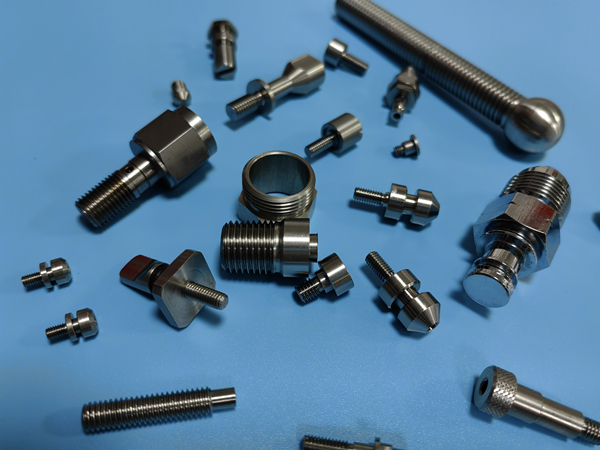Search
What are you looking for?

Swiss turn machining, also known as Swiss-style turning, is a specialized form of CNC (Computer Numerical Control) machining that is used to create complex and precise components with high accuracy. It is a technique that is widely used in the production of small components for various industries, including medical, aerospace, optical, and automotive.
The Swiss turn machining process involves the use of a sliding headstock lathe that holds the workpiece firmly in place while a rotating cutting tool removes material from the workpiece. The workpiece is fed through a guide bushing that provides support and guidance to the material as it is being machined.
The guide bushing is an essential part of the Swiss turn machining process as it enables the production of long, slender parts that would be difficult to machine using traditional methods. The guide bushing supports the workpiece close to the cutting tool, which minimizes deflection and allows for high-precision machining.
Swiss turn machining also utilizes a bar feeder that feeds the workpiece continuously through the guide bushing as it is being machined. This allows for the production of high volumes of parts with consistent quality and accuracy.
Swiss turn machining is a specialized type of precision machining that offers several benefits. Here are some of the key advantages of Swiss turn machining:
1. High precision: CNC Swiss machining is capable of turning extremely precise parts with tight tolerances because the machine's guide bushing provides excellent support to the workpiece, reducing deflection and vibration.
2. High-speed production: Swiss-style turning machines are perfect for high-speed production, making them ideal for manufacturing large quantities of small parts quickly and efficiently. They can also perform multiple operations in a single setup, further increasing productivity.
3. Complex part geometries: It is capable of machining complex part geometries that would be difficult or impossible to produce using other machining techniques. This is because the machine's sliding headstock and guide bushing allow for precise control over the workpiece.
4. Cost-effective: Swiss turn machining can be more cost-effective than other machining techniques, particularly for high-volume production runs because of the lathe’s high-speed production capabilities and ability to perform multiple operations in a single setup which can reduce labor and tooling costs.
5. Versatile: Swiss turn machines are capable of machining a wide range of materials, including stainless steel, aluminum, brass, plastics, titanium, and composites. They can also handle a variety of part sizes and shapes, making them a versatile option for many different types of manufacturing applications.

Our state-of-the-art Swiss type lathe are capable of producing highly precise parts with tight tolerances, complex geometries, and excellent surface finishes.
At Falcon, we pride ourselves on delivering high-quality Swiss turned components that meet the exact specifications of our customers. We have successfully obtained certifications, such as ISO 9001, ISO 13485, IATF 16949, and SGS certification.
Whether you need high-volume production runs or small batches of highly complex parts, Falcon has the capabilities to meet your needs. Contact us today to learn more about our precision machining services and how we can help you achieve your manufacturing goals.